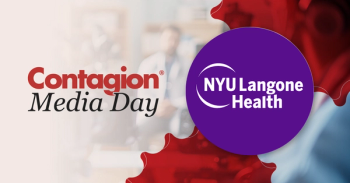Nontargeted Hepatitis C Screening in Emergency Departments Increases Diagnoses
Jason Haukoos, MD, on how the DETECT Hep C trial leverages 24/7 emergency care to reach vulnerable patients.
As the
“Emergency departments are the safety net health care sites across the country for large populations,” said Jason Haukoos, MD, MSc, FACEP, an emergency physician and principal investigator of the trial. “Emergency departments see 140 to 150 million visits annually in large numbers. Patients who seek care in emergency departments commonly do so because they don't have direct or easy access to primary care or other sources of health care.”
These access barriers disproportionately affect people who are at higher risk for infections such as hepatitis C virus (HCV). “In particular, those who are most vulnerable, patients who are at high risk—perhaps the most vulnerable in the sense of not having access to care—often will only make their connection with health care through an emergency department,” Haukoos said.
That reality gives EDs a crucial opportunity to intervene, Haukoos explained. “So it affords an opportunity in an emergency department setting to perform screening—as in this case, for hepatitis C—to identify them, because it may be the only instance where you may identify them and have the opportunity to subsequently link them to care.”
Haukoos’ team aimed to leverage this moment of contact. “That really is the nature of the work that we do in emergency medicine—and the research that I and my team do—to really try to leverage that intersection between patients who are at risk and most vulnerable and how they interface with emergency care and what we can do in the emergency department to help mitigate some of this.”
Still, he noted, most patients don’t come to the ED expecting to be tested for hepatitis C. “Patients don't come to the emergency department largely because they want to be, necessarily, screened for hepatitis C. They come for various complaints. You know, across the board, we see everything. Our doors never close; our lights never go out—24/7.”
This raises an operational challenge: integrating a preventive measure such as HCV screening into a high-volume acute care environment. “Another critical piece to this is, how do you integrate this type of screening into a clinical care setting that isn't meant necessarily as a primary kind of source of care for this type of prevention?” Haukoos said. “So the primary goal of emergency care is to take care of those who are sick or injured. And then you start thinking about, how do you do prevention work?”
The DETECT Hep C trial was designed to answer that question in real-world settings. “So one of the big takeaways from this trial is it's a pragmatic trial,” Haukoos said. “All hepatitis C screening across the 3 emergency departments—Denver, Johns Hopkins Hospital in Baltimore, Maryland, and the University of Mississippi in Jackson—was fully integrated into clinical care. It was pragmatic. It was really integrated in a real-world sense to show how this can be done, generally without having to bring in additional resources to do the screening.”
“This study is the main screening trial from the DETECT Hep C project, but the DETECT Hep C project also consists of some other pieces as well,” he said. “My partner in this, Sarah Rowan, she led a subsequent clinical trial that was just performed in Denver, not at all 3 sites, just at our site here.”
That follow-up study tested the effectiveness of patient navigation strategies to connect people with HCV care. “That trial looked at linkage navigation—so they called it the Linkage Navigator—and the effect of that on successful linkage to care and hepatitis C care continuum outcomes: treatment initiation of direct-acting antivirals, treatment completion, SVR12 [sustained virologic response at posttreatment week 12].”
“It was a separate study, a randomized controlled trial, where we compared linkage navigation with clinician referral from the ED, which is the current standard of care,” Haukoos said. “We presented those results at the Conference on Retroviruses and Opportunistic Infections here in Denver in 2024. The main results of that trial—the paper—is currently being written. We anticipate publishing those results later this year.”
And although the full findings have not yet been published, Haukoos offered an encouraging preview. “But just to give a bit of a sneak peek: It was a positive study as well.”
Reference
Haukoos J, Rothman RE, Galbraith JW, et al. Hepatitis C screening in emergency departments: the DETECT Hep C randomized clinical trial. JAMA. Published online July 9, 2025. doi:10.1001/jama.2025.10563
Newsletter
Stay ahead of emerging infectious disease threats with expert insights and breaking research. Subscribe now to get updates delivered straight to your inbox.


























































































































































































































































































